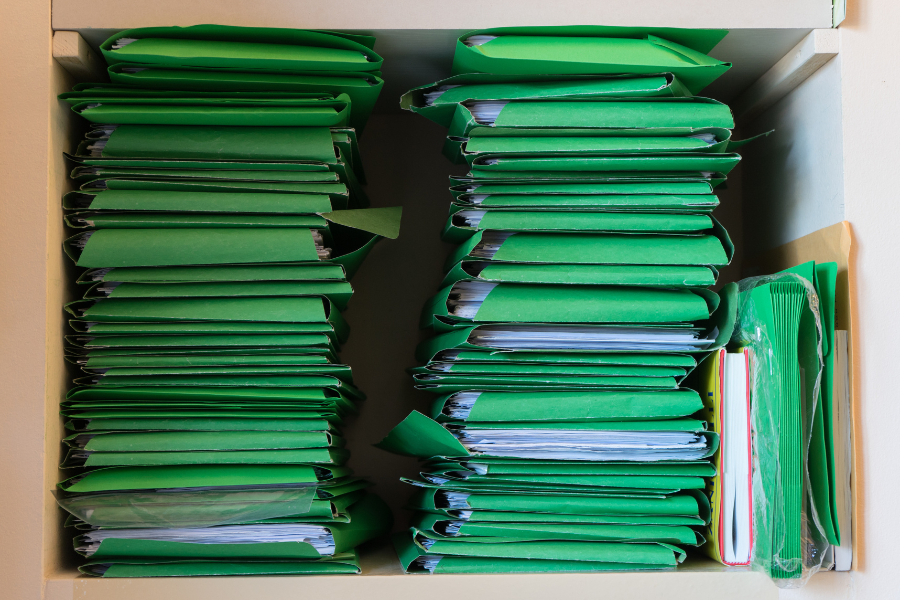Findings from the 2023 report, “The Case for Inclusion: Making Good on Our Nation’s Promise of Community Inclusion for All” have demonstrated that home- and community-based services (HCBS) are now at a “crisis” level. In this article, we examine recent analysis of the report, key findings, recommendations for HCBS, and how states are responding to the crisis.
Analysis
Each year the “Case for Inclusion” report evaluates 80 factors related to how effectively states are meeting the needs of individuals with intellectual and developmental disabilities (I/DD). Data for the report is sourced from Kaiser Family Foundation’s State Health Facts, National Core Indicators, The State of the States in Intellectual and Developmental Disabilities and the University of Massachusetts Boston’s StateData.info.
A recent analysis from United Cerebral Palsy and the American Network of Community Options and Resources (ANCOR) asserted that the crisis can be attributed to three issues. First, HCBS programs are shutting down due to lack of funding. Second, individuals with I/DD are unable to access services, which increases the likelihood wait lists will remain high. Finally, HCBS providers are unable to meet new federal rules due to a lack of feasibility.
“Threats to community-based services due to workforce and funding shortages have existed for decades, but the threat has escalated to dangerous levels, forcing providers to deny access to crucial care and other support services for people with IDD.”
Armando Contreras, president and CEO of United Cerebral Palsy
Key Findings
The report’s executive summary includes several key findings that help to capture the scope of the current challenges facing HCBS:
- There are 481,601 people with I/DD on wait lists for HCBS services; however, moving off the waitlist does not automatically mean individuals can access services.
- Only 36 states currently participate in the Money Follows the Person program, down from 44 states in 2016.
- Although state funding for people with I/DD increased between 2017 and 2019, it does not keep pace with the number of people requiring care from family members during the pandemic due to a shortage of direct service professionals (DSPs) in the HCBS workforce.
- Only 22% of individuals with I/DD accessed day services or employment through integrated employment. This rate has stagnated since 2013, ranging between 19% and 22% over the last decade.
Additional analysis provided by ANCOR in 2022 found that 63% of providers had been forced to end programs or services and 83% had to turn away new referrals. According to advocates for HCBS, the core issue is a shortage of DSPs who are qualified to work. Wages are still below the $15 per hour threshold, and the work can be emotionally and physically exhausting.
ANCOR’s report found that over half (56%) of DSPs reported anxiety, while just under half reported difficulty sleeping (43%) and/or depression (40%). Providers have stated they are unable to pay and retain DSPs given current Medicaid funding levels.
“Before the pandemic, our DSP turnover rate was 45%. Now it’s closer to 70%, with 20% of our positions vacant at any one time, and that’s across all 13 states where we operate. We are at the breaking point we’ve been warning about for years.”
Linda Timmons, president and CEO at Mosaic
Report Recommendations
Part II of the “Case for Inclusion” report provided recommendations for “repairing the damage” to HCBS and addressing the workforce shortage. These included:
- Providing guidance on how to handle workforce regulatory flexibilities following the end of the public health emergency (PHE);
- Requiring regular review of reimbursement rates by states to ensure payments accurately reflect costs;
- Establish regular reporting on “workforce volume, stability and compensation, as well as systemic barriers to equity and the delivery of culturally competent services within the direct support workforce;”
- Expediting visa requests for qualified workers who wish to enter the American DSP workforce;
- Passing a significant federal increase to Medicaid HCBS funding; and
- Enact federally funded grant programs to support DSP “training, recruitment, retention and advancement.”
State Response
States have been working to reduce the number of “backlogged” applicants currently on HCBS wait lists. Primary strategies thus far have included investing more state funding into services, making improvements to the application process and engaging in more active recruitment of DSPs.
Here are some specific examples from around the country:
- Virginia has divided their 14,400-person wait list into two categories. Those requiring services within a year or less are designated as “priority one” – which moves them up in the queue. This currently impacts 3,199 of the state’s applicants.
- In 2018, Louisiana created the Screening for Urgency of Need (SUN) system, which identified wait list applicants with urgent or emergency-level needs. They then provided those individuals with immediate access to care. Those who weren’t added to the “emergency” list were added to a regularly-screened registry. These shifts brought their wait list down from almost 30,000 people in 2018 to nearly zero by 2020.
- Ohio’s wait list was close to 69,000 in 2018, leading them to create a new assessment tool in 2019. The new tool helped them more accurately reevaluate applicants and remove those who did not meet the necessary criteria. Those individuals were offered different state or Medicaid resources, bringing their wait list total down to approximately 2,000 in 2021.
- Texas established the Texas Home Living Program to fund trained professionals to help individuals with I/DD stay in their homes. Unfortunately, its wait list has continued to grow, reaching nearly 170,000 people in January 2022.
- California has worked to streamline its application process for families, enabling them to apply online using a more accessible and simpler format.
With so many different stakeholders agreeing HCBS is in a state of crisis, advocates remain hopeful Congress and the administration will focus greater effort on funding Medicaid, making the Money Follows the Person program permanent, and finding ways to expand the DSP workforce.
To read the full 2023 “Case for Inclusion” report, click here.
Sources: https://www.disabilityscoop.com/2023/03/02/nations-disability-services-at-breaking-point-report-finds/30267/
https://www.pbs.org/newshour/nation/the-wait-for-government-disability-services-can-last-years-some-states-are-trying-to-change-that
https://www.disabilityscoop.com/2022/10/21/disability-service-provider-crisis-worsening-survey-finds/30095/
https://www.ancor.org/wp-content/uploads/2022/10/The-State-of-Americas-Direct-Support-Workforce-Crisis-2022.pdf
https://caseforinclusion.org/application/files/7316/7753/8320/The_Case_for_Inclusion_2023_Making_Good_on_Our_Nations_Promise_of_Community_Inclusion_for_All.pdf

